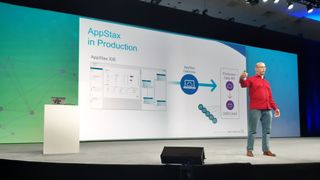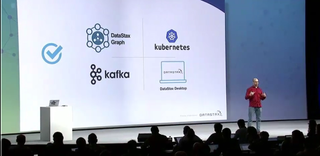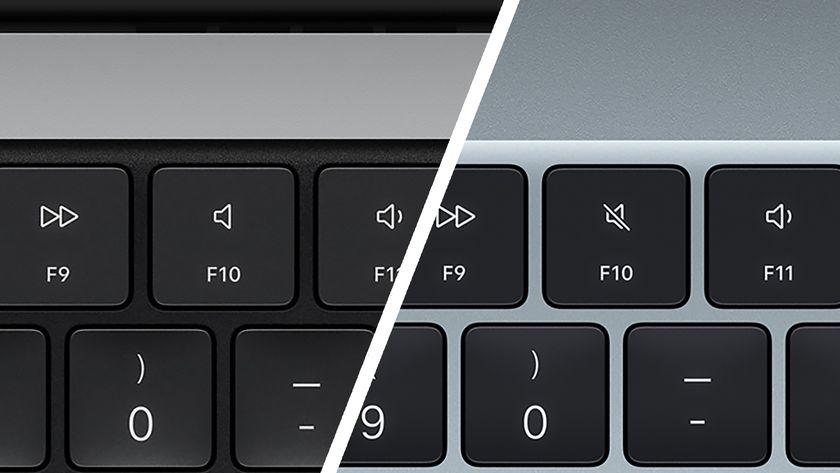DataStax: no longer just a database company
Its core product solidified, the company widens its mandate

With some of the top brands and leading online services as its customers, it’s fair to say that DataStax has got a handle on big data. The company has now set its eyes on helping users, old and new, eradicate some of the day-to-day operational complexity.
The company hopes to bring “everything you need in a common interface for application portability, but without the pain and the complexity of some of the operations experiences you may have had in the past. That’s our mission,” explained Billy Bosworth in his opening keynote at DataStax’s annual Accelerate conference in Washington.
The sentiment is echoed by Manikandan Srinivasan, Senior Product Director, at DataStax:
“What we would like to do is to make the lives of operators a lot simpler than what it is today," says Srinivasan. In the past, the, approach has been to supply a whole host of metrics and leave the interpretation to the user. "What we would like to do is solve the problem altogether," says Srinivasan. "By removing the operational layer completely and solving the operational complexity of managing Cassandra. Because even managing Cassandra is pretty difficult," he explained. "You can throw a bunch of dashboard, you can throw a bunch of metrics but after that...especially for customers that come from a relational background it is very difficult to transition to this kind of a world. And what DataStax is trying to do is solve this problem.”
- Why even small businesses need big data
- Choosing the right data security solution for big data environments
- Building reliable data pipelines with AI and DataOps
Easy does it
Constellation is the company’s solution to easing operational complexity. Srinivasan runs the development team of DataStax Insights, which is an analytics tool that’s pitched as a supplementary service to Constellation.
Introducing it in his keynote, Bosworth pointed out that just because DataStax was now taking care of their customer’s cloud deployments with Constellation, it shouldn’t take away the customer’s ability to see what’s happening under the covers.
With Insights, Bosworth explained, customers can leverage DataStax’s expertise in an automated fashion: “We are going to give you high level intelligence, commonsensical health indexes to know where you want to look, what needs attention and what doesn’t. You’ll also have heat maps that’ll take you down deeper and deeper into the information into your cluster, with actionable recommendations about what to do next.”
Are you a pro? Subscribe to our newsletter
Sign up to the TechRadar Pro newsletter to get all the top news, opinion, features and guidance your business needs to succeed!
“Insight will originally be available for our Cassandra as a Service, but we do have a stretch-goal of having it available by the end of the year for on-premise customers,” shared Robin Schumacher, DataStax’s Chief Product Officer.

Jonathan Ellis, DataStax’s co-founder and CTO took the stage on the second day and introduced the third major component of the company’s cloud platform called AppStax:
“What we want to do with AppStax is somewhat similar for application development that Insights is doing for operations.” He went on to describe AppStax as a combination of an IDE that can create a physical schema and a development endpoint: “Our goal is that you don’t need to touch the CQL layer, we want to abstract that up a level to get you thinking about the microservice level and all you need to do is ask for the document you need and you get that back in a JSON document.”

Apps to go
Speaking to us later in the day, Ellis said he was “pretty pumped” about AppStax: “Like I said I feel like with Cassandra as a Service and with Insights we are executing a playbook that the industry understands pretty well. But with AppStax we are working on a problem that nobody has solved before and I think we’ve got pretty good traction on it.”
Besides the cloud-centric products, Ellis also previewed a bunch of other apps and services to ease the management of a DSE cluster. However, barring one, none of the products announced at the conference will be available to users anytime soon. Constellation and Insights will be made available later in the year, but AppStax will take a little longer and comes to market early next year.
When quizzed Schumacher alluded to the company’s Early Adopter Program (EAP), where they allow customers a technical preview of the software, but added that there are a couple of things that are different this time around:
“One, that the time frame between the announcement and the actual GA is a little bit longer -- usually that time can be about two months but it’s a little bit longer this time. It’s being that way so that we can get a lot of folks on to the platform in a bigger EAP program to test it and we’ve already got quite a few signups from the announcement.” Secondly, Schumacher explained that unlike before they’ve put up some of the under development apps on their website for anyone to try: “Earlier our EAP program required you to signup and agree not to tweet about the software and things along those lines. Now as long as you are good with not putting it into production, download it and you’re good to go.”
The announcements signal a clear shift in the company’s priorities and this fact isn’t lost on Ellis: “I’ve always told people it’s a database [company]. I think we are probably heading closer to the direction of the database management system with the stuff that we announced today. But the distinction, where do you cross the line from one to the other is a bit fuzzy.”
- We've also highlighted the best database design software
With almost two decades of writing and reporting on Linux, Mayank Sharma would like everyone to think he’s TechRadar Pro’s expert on the topic. Of course, he’s just as interested in other computing topics, particularly cybersecurity, cloud, containers, and coding.

















